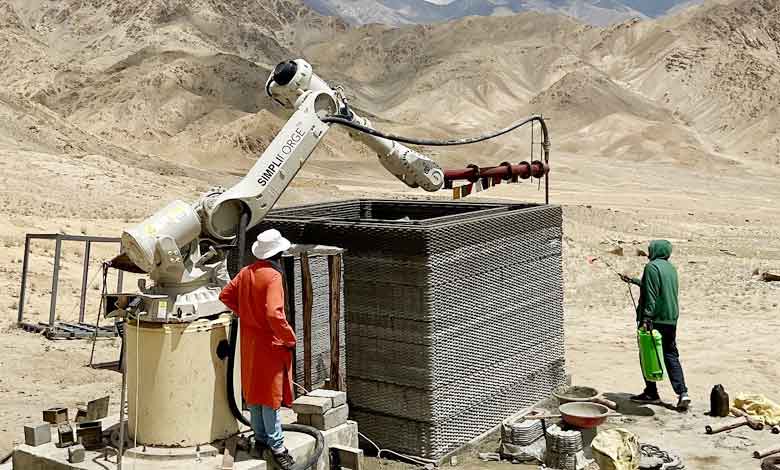India’s Simpliforge Sets Global Record with World’s Highest On-Site 3D Printed Structure in Himalayas
The project was conceptualized and initiated by Arun Krishnan, a PhD student at IIT Hyderabad and representative of the Indian Army. It stands as a testament to the growing synergy between academic research and industrial innovation in India.

Hyderabad: In a groundbreaking achievement blending defense, engineering, and innovation, Hyderabad-based deep-tech company Simpliforge Creations, in collaboration with IIT Hyderabad and the Indian Army, has successfully delivered the world’s highest on-site 3D printed military structure under Project PRABAL. Constructed at a staggering altitude of 11,000 feet in Leh, this protective military bunker is a global first—engineered and executed under extreme high-altitude, low-oxygen (HALO) conditions.
The project was conceptualized and initiated by Arun Krishnan, a PhD student at IIT Hyderabad and representative of the Indian Army. It stands as a testament to the growing synergy between academic research and industrial innovation in India.
Engineering Marvel at the Edge of Limits
Guided by Prof. K.V.L. Subramaniam, the IIT Hyderabad and Simpliforge teams developed a specialized 3D printing system capable of functioning in severe environmental conditions including low humidity, thermal fluctuations, and reduced oxygen levels. The structure was printed using locally sourced materials, with a total print time of 14 hours and completion within just 5 days.
“Executing this project in Ladakh’s harsh terrain was immensely challenging,” said Dhruv Gandhi, CEO of Simpliforge Creations. “Our robotic printer was deployed and operational within 24 hours, despite reduced energy output and environmental stresses impacting both equipment and manpower.”
Material Science Meets Mission Readiness
The project hinged on material innovation, with the development of a concrete mix designed to withstand HALO conditions while maintaining mechanical integrity.
“This wasn’t just structural engineering—it was material science at its best,” noted Prof. Subramaniam. “We customized a printable mix after extensive testing, using local sand and aggregates. Its durability and adaptability were critical to mission success.”
A Vision Born at IIT Hyderabad
Arun Krishnan reflected on the origins of Project PRABAL, which began during his M.Tech studies:
“Several groups attempted similar missions in Leh but failed due to the extreme conditions. It was the relentless drive and technical precision of Simpliforge and IIT Hyderabad that made this vision a reality. We have now proven that indigenous tech can meet strategic defense needs in the harshest of terrains.”
From Mountains to the Moon
Hari Krishna Jeedipalli, Managing Director of Simpliforge, emphasized this project as a stepping stone for future exploration:
“Since 2022, we’ve been pioneering additive construction—from India’s first 3D printed bridge to the world’s first 3D printed temple. This bunker in Ladakh is our most extreme challenge yet, and the lessons from it are invaluable as we move toward extra-terrestrial construction—on the Moon, and Mars.”
“Ladakh’s open, unpredictable climate provided the perfect testing ground for future space habitats. This is more than infrastructure—it’s India’s leap into the next frontier of deep tech.”
Project PRABAL marks not just a military milestone but a significant stride in India’s self-reliance journey, showcasing the potential of homegrown innovation to serve national defense while laying the foundation for future space-age construction technologies.
